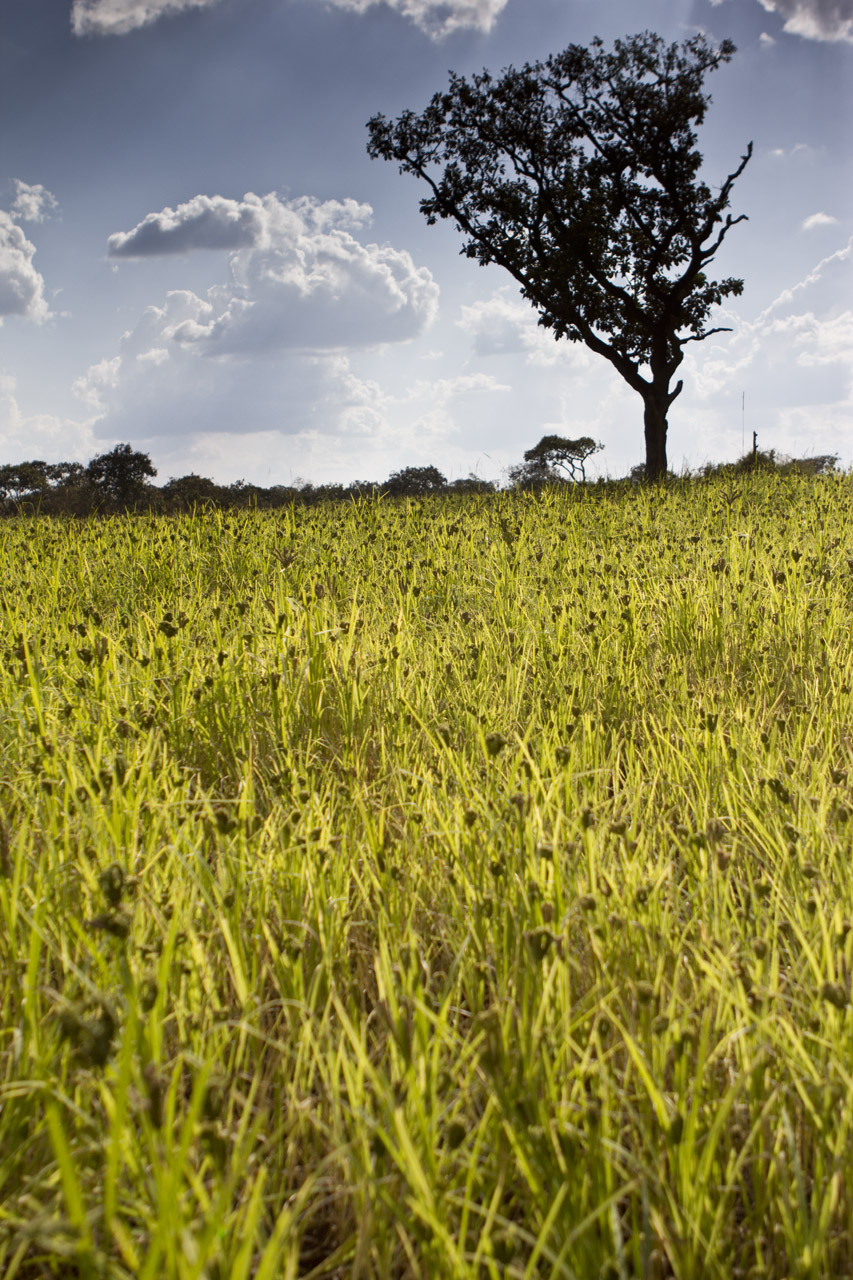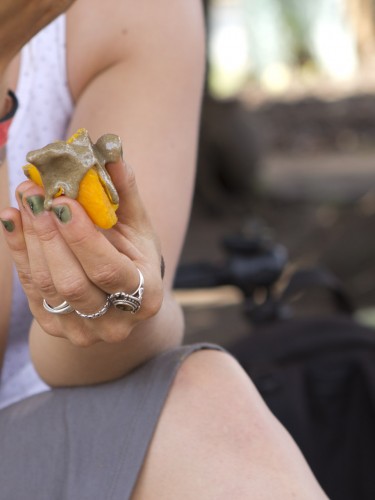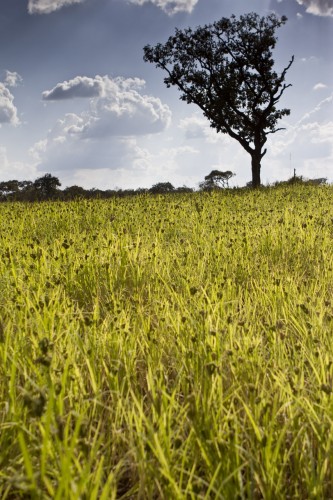There are twenty four minutes left on this laptop battery. Power to the plugs in ‘hotel’ Tropikana (don’t ask) has failed, though the lights work absolutely fine. Outside is a little dark, and slightly infused with the smell of burnt trash and roasting meat. Somewhere out there, a bar cranks out huge sound while patrons lounge in plastic furniture drinking beer. The waitresses at the bar no longer trust me to return their beer bottles and have begun keeping a deposit. This has not been entirely unreasonable on their part.
This morning started out promisingly enough. Only a short ride on the boda-boda bikes (video soon. I promise) to the Karin children’s clinic, a fifteen minute ride over roads that have turned to giant ponds in the aftermath of last night’s rainstorm. The clinic moved from its previous location last year after the government asked them to fill in this area instead, given that it is woefully undercovered for basic primary care. That is to say that the entire province is fairly under-covered, but that this area is more undercovered than the average undercoveredness of the landscape overall.
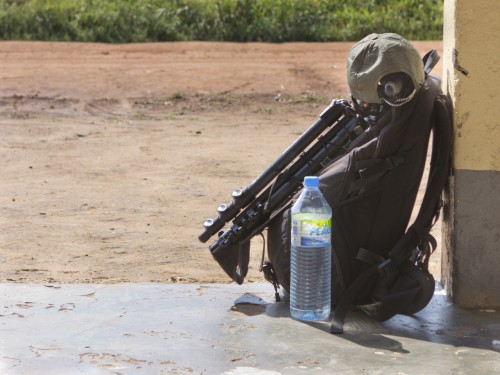
This bag and I have a long and nostalgic history. The water bottle and I much less so. That boded less well for the water bottle later in the day.
Post-clinic visit and an interview later, and we catch the boda bikes one more time, going an equal distance out of Gulu town in the opposite direction. The Karin clinic project has another phase being built here, which was only walls and facebrick when I was last here. A year on, and it’s close to completion. I arrive first, and it’s fifteen minutes before the others arrive. One of their two bodas had a puncture, and the second decided to take advantage of the situation to overload for the last few kilometers and claim an extra passenger’s scalp. The result looks a little like this.
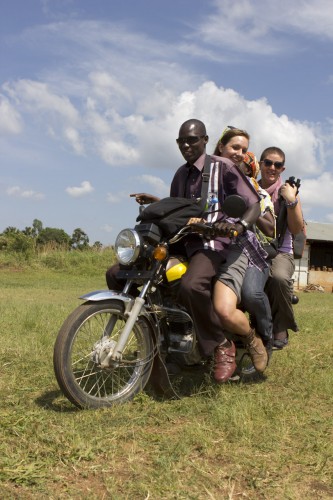
These are the cheeky people I share the Hotel Tropikana with. Except for the driver. He is a far more responsible citizen generally. Except when chasing an extra two fares.
Well, a lot like that actually. This bunch of posers insisted on driving at a crawl around the grass until I could shoot a decent pic of their escapades. If you are the mother of one of them, please realise that this is not in fact an uncommon practice in this part of the world. Overloading, I mean, not chugging around for photographs.
Next up is an agricultural appointment. Heifer International has been busy here in the past, running a program for cattle-raising in which selected families receive a loan cow that is to be ‘paid back’ by the return of its first female calf. Then the primary cow is theirs to rear and breed from. The project also put in place the infrastructure for milk from the various individual cows to be sold by their owners to a central cooler back in town. The cooler pools all the small contributions and sells the result in bulk to local businesses, creating a market for small-volume milk production in Gulu. That, ladies and gentlemen, is the bare-bones outline of an agricultural development project.
There are photographs of cows somewhere, but they are really not all that interesting. I maintain that documenting livestock projects must be as one-dimensional an occupation as shooting the front cover for Farmers’ Weekly. Oh, this cow is brown? How exotic! Let’s try and get it to look cute. Or have a picture of it getting fed. Isn’t that adorable?
Thus are the five or so permutations of a cow-photographer’s repertoire exhausted. Far more interesting was lunch.
Pumpkin with salt and a sesame seed paste called sim sim is an absolutely delicious way of climbing down from the dizzying experience of a brown cow. But you need to mind your fingers, and not be too heavy-handed when scooping sauce, or you will come unstuck.
Ten minutes on the battery.
Boda boda ride to St Judes. It’s a children’s home that’s been looking after the orphaned, abandoned and mentally and physically handicapped since the early eighties. That’s to say, since the time that the Lords Resistance Army was busy tearing up the place. Visiting the center and chatting to one of the coordinators was a lesson in the stories that journalists can choose to tell, or not tell.
The wards are full of sad stories. A father who killed himself in shame after his fifth child in a row was born with a degenerative motor-neuron disease. Or a student at Gulu University who has begun losing the ability to use her legs just as she was approaching the end of her studies and a future beyond as a teacher. These people exist, but to tell their stories to the exclusion of all others is to misrepresent a sense of the place.
Two hundred women are enrolled in their caregiver training program, providing support to handicapped and disabled children as far away as South Sudan. Their children graduate from St Jude’s primary school program to go on and enroll in mainstream secondary schools in Gulu. The university student is looking forward to being a special needs teacher, and may in all likelihood go on to be an excellent one.
Nobody usually tells you that. Pictures of distended heads and sadness bring in the aid dollars and accord with people’s expectations. They are also just the low-hanging fruit for lazy journalism. The truth is more complex.
Because even in sadness, there is hope and progress and good, and they stand apart as much as they brush against each other. Conflating them hides the sharp edges of each, and that’s just not how life is.
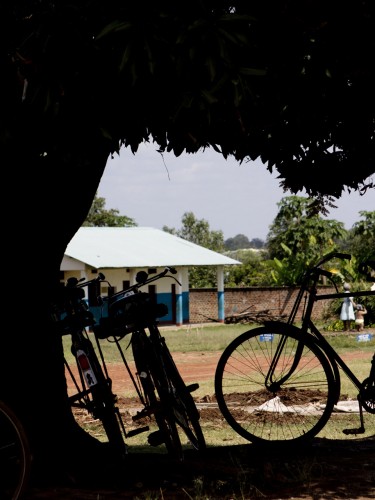
St Jude is a home for orphaned and abandoned children. And a lesson in the kinds of stories we choose to tell.
Five minutes.
A landcruiser arrives at St Jude. Inside is Brother Elliot, an Italian who has been working with St Jude since the days of Idi Amin. He’s off to inspect a mission farming project almost an hour away on some terrible, terrible roads. Would we like to come along, eat peanuts out the ground and learn about brick making and the farming of cassava, groundnuts and sesame?
But of course.

